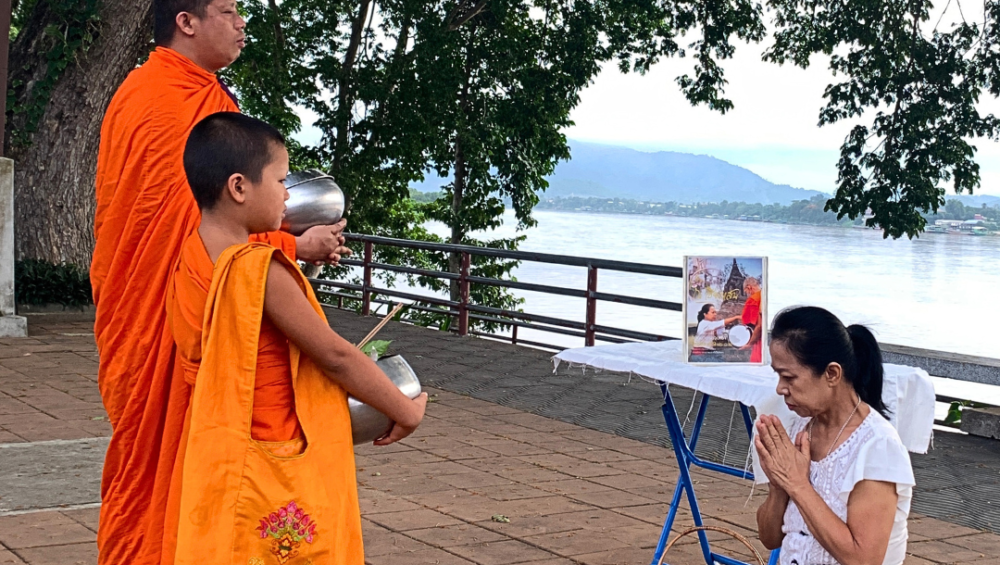Beyond simple belief, religion now serves as a unifying force for many groups. There is a temple at the center of every town. The locals in the neighborhood typically go to make merit in the place where they dwell. So, it’s not surprising that there are so many people in Chiang Saen’s temples during Buddhist Lent Day.
With a combination of cultures and extensive traditions, the customs of the conclusion of Buddhist Lent in each region are typically not the same. As a result, we can observe that there are generally intriguing rites towards the end of Buddhist Lent in the north, as shown below.
Illuminated Boat Procession
According to their beliefs, the residents of Chiang Saen regularly celebrate with a celebration known as Illuminated Boat Procession. A monk ritual was held, and a mermaid boat, representing a serpent (an animal in Thai folklore), was constructed out of more than twenty different natural materials and decorated with lights before being carried along the river Mekong. Lamps were lighted to honor the Naga and other deities revered along the Mekong River on Buddhist Lent Day before the boat was let free in the middle of the river.
Floating Lanterns
During Buddhist Lent Day, floating lanterns will be released in several northern regions. Northerners’ native culture includes many holidays centered around crafting lanterns for competitions, such as Buddhist Lent Day and other merit-building activities. But, like letting go of numerous problems in life, you may let the lanterns drift away.
Almsgiving to Devorohana
Almsgiving to Devorohana is the customary action that Buddhists continue to conduct. It will commence one day following the end of Buddhist Lent Day. To gain virtue, people will prepare rice and other dried food for the monks who come to take alms.





